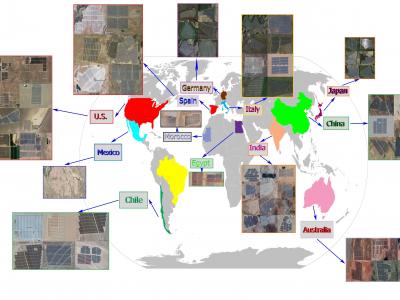Deep Learning

The rapid outbreak of COVID-19 due to the novel coronavirus SARS-COV-2 is the biggest issue faced by mankind today. It is important to detect the positive cases as early as possible to prevent the further spread of this pandemic.
- Categories:
 4098 Views
4098 ViewsThis dataset contains the trained model that accompanies the publication of the same name:
Anup Tuladhar*, Serena Schimert*, Deepthi Rajashekar, Helge C. Kniep, Jens Fiehler, Nils D. Forkert, "Automatic Segmentation of Stroke Lesions in Non-Contrast Computed Tomography Datasets With Convolutional Neural Networks," in IEEE Access, vol. 8, pp. 94871-94879, 2020, doi:10.1109/ACCESS.2020.2995632. *: Co-first authors
- Categories:
 3999 Views
3999 ViewsThe PRIME-FP20 dataset is established for development and evaluation of retinal vessel segmentation algorithms in ultra-widefield (UWF) fundus photography (FP). PRIME-FP20 provides 15 high-resolution UWF FP images acquired using the Optos 200Tx camera (Optos plc, Dunfermline, United Kingdom), the corresponding labeled binary vessel maps, and the corresponding binary masks for the valid data region for the images. For each UWF FP image, a concurrently captured UWF fluorescein angiography (FA) is also included.
- Categories:
 3636 Views
3636 Views
Several pathological phenomena are closely associated with mechanical properties of vessel and interactions of blood flow–wall dynamics. However, conventional techniques cannot easily measure these features. In this study, new deep learning-based simultaneous measurement of flow–wall dynamics (DL-SFW) is proposed by devising integrated neural network for super-resolved localization and vessel wall segmentation and combining with tissue motion measurement technique and flow velocimetry.
- Categories:
 441 Views
441 ViewsThis paper applies AI (artificial intelligence) technology to analyze low-dose HRCT (High-resolution chest radiography) data in an attempt to detect COVID-19 pneumonia symptoms. A new model structure is proposed with segmentation of anatomical structures on DNNs-based (deep learning neural network) methods, relying on an abundance of labeled data for proper training.
- Categories:
 3802 Views
3802 ViewsExtracting the boundaries of Photovoltaic (PV) plants is essential in the process of aerial inspection and autonomous monitoring by aerial robots. This method provides a clear delineation of the utility-scale PV plants’ boundaries for PV developers, Operation and Maintenance (O&M) service providers for use in aerial photogrammetry, flight mapping, and path planning during the autonomous monitoring of PV plants.
- Categories:
 1440 Views
1440 ViewsThis work develops a novel power control framework for energy-efficient powercontrol in wireless networks. The proposed method is a new branch-and-boundprocedure based on problem-specific bounds for energy-efficiency maximizationthat allow for faster convergence. This enables to find the global solution forall of the most common energy-efficient power control problems with acomplexity that, although still exponential in the number of variables, is muchlower than other available global optimization frameworks.
- Categories:
 478 Views
478 Views
The zizania image dataset consists of a total of 4900 zizanias. The quantity of high quality samples is 2648 and defective quality samples is 2252.
There are four classes in the apple image dataset, which are apples with a diameter greater than 90 mm, between 80 mm and 90 mm, less than 80 mm, and diseases and insect pests. The quantity distributionin above categories are 3647 (51.19%), 2464 (34.59%), 558 (7.83%), 455 (6.39%).
- Categories:
 1345 Views
1345 ViewsEgocentric vision is important for environment-adaptive control and navigation of humans and robots. Here we developed ExoNet, the largest open-source dataset of wearable camera images of real-world walking environments. The dataset contains over 5.6 million RGB images of indoor and outdoor environments, which were collected during summer, fall, and winter. 923,000 of the images were human-annotated using a 12-class hierarchical labelling architecture.
- Categories:
 6038 Views
6038 Views





